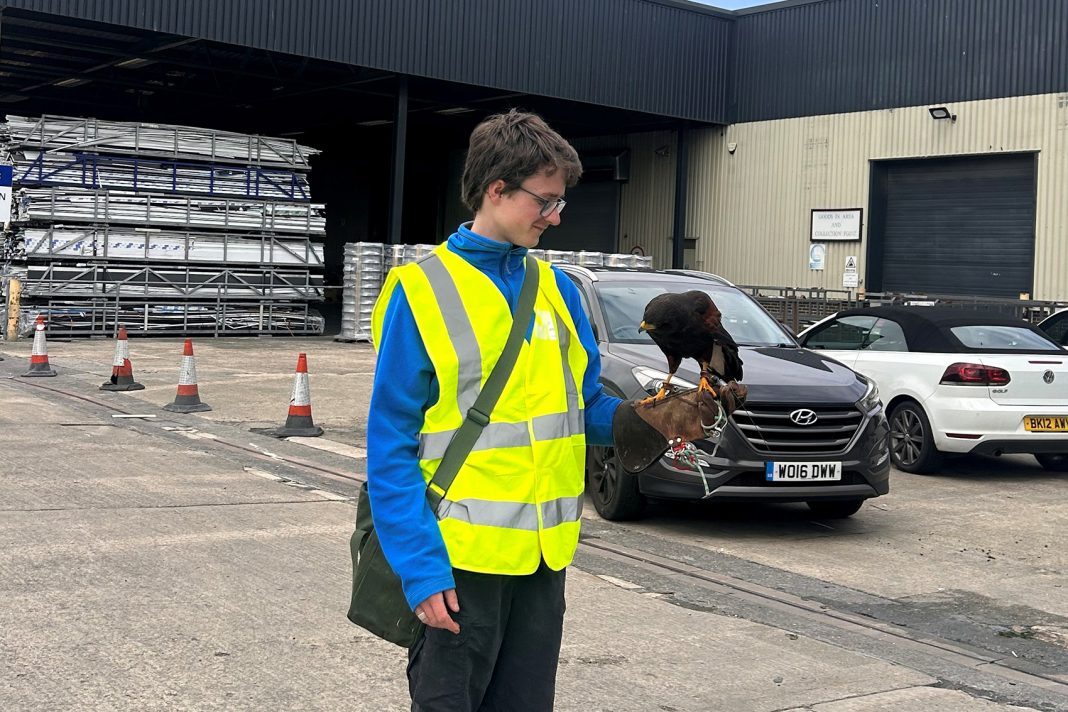Solar panels are great way for companies to lower their carbon footprint but that means they need to ‘see’ the sun.
Having invested more than six-figures in 2500 solar panels on the roof of its Calne manufacturing facility Deceuninck’s green energy strategy was put under threat from a pesky airborne pest – the Common Gull.
With its large rooftop offering judged a perfect nesting habitat for the amorous airborne assassins, their guano threatened kilowatt outputs.
Rather than getting into a flap the facilities team turned to their own eco allies, Gerald, Bo Jangles and Nessie, the three Harris Hawks of Talons Out Bird Services.
The natural enemy of nesting sea birds, the three Harris Hawks have been flown regularly over Deceuninck’s facility, to persuade the gulls that solar panels are a less than perfect nesting site.
James Cross, Maintenance Engineer explained: “We installed approaching 2,500 solar panels at the start of this year, but very soon it became clear we had a problem, seagulls – or more accurately their waste, which was starting to coat them.
“The solar panels were installed as part of our sustainability strategy so it’s important that we maximise their outputs which if the seagulls were left unchecked, would have been compromised.
“The Harris Hawks are flown regularly as part of an eco-solution which encourages the gulls to move on and allows us to maximise outputs of renewable energy.”
The new solar panels will generate a total of 895,762 kWh of clean energy per year reducing CO2 emissions from Deceuninck’s Calne site by 498,507kg a year.
Deceuninck has established a lead on sustainability based on its’ commitment to the Science Based Targets (SBTi) programme, with a headline pledge to cut the CO2 emissions from its own operations (Scope 1&2) by 60% by 2030 from a 2021 baseline.
A further six figure investment at the start of this year saw Deceuninck add two new chillers to its operation, delivering a 50% reduction in energy usage.












